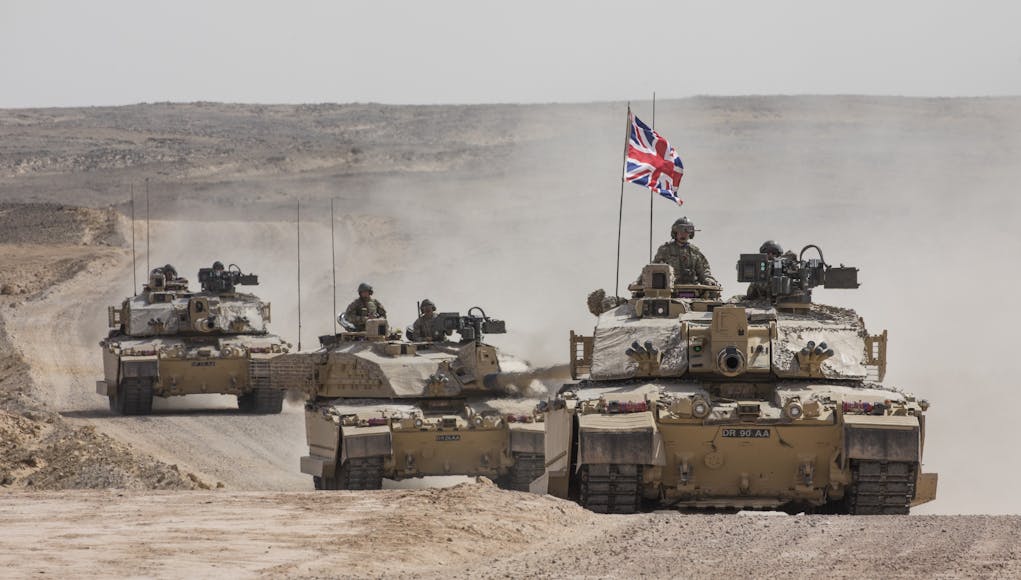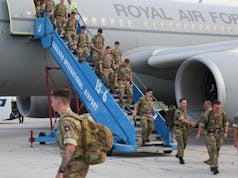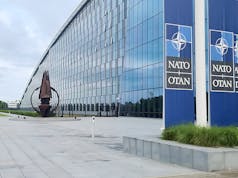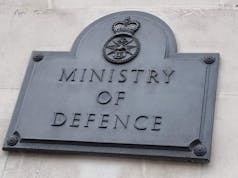The Ministry of Defence (MoD) has published its annual report and accounts for the financial year 2023-24.
This document includes a performance report, an accountability report, and the annual accounts, providing a detailed overview of the Defence activities and financial management over the past year.
The report reveals a total expenditure of £53.908 billion for the year, which I found interesting to help people better understand where the budget actually goes. The detailed expenditure is as follows:
| Category | Expenditure (£Bn) | Percentage (%) |
|---|---|---|
| Total Expenditure | 53.908 | 100.00 |
| Capital Expenditure | 17.931 | 33.21 |
| Defence Nuclear | 2.596 | 4.82 |
| Service Personnel | 10.957 | 20.33 |
| Civilian Personnel | 1.77 | 3.28 |
| Equipment Support | 5.721 | 10.61 |
| Cost of Operations | 2.571 | 4.77 |
| Other Costs | 1.74 | 3.23 |
| Infrastructure | 5.036 | 9.34 |
| Inventory | 1.503 | 2.79 |
| DE&S | 1.285 | 2.38 |
| Arms Length Bodies | 0.219 | 0.41 |
In other related news, in response to a series of written parliamentary questions from Conservative MP James Cartlidge, the UK government has reiterated its commitment to achieving 2.5% of GDP expenditure on defence.
This comes despite recent remarks from the armed forces minister, Luke Pollard, indicating that increased military spending is contingent on economic growth.
Cartlidge’s questions covered a wide range of defence priorities, including the Land Environment Tactical Communications and Information Systems programme, upgrades to the existing fleet of Typhoon fighter jets, and the development of the Challenger 3 Main Battle Tank. The Minister of State for Defence, Maria Eagle, consistently responded to each query.
“The Government is fully committed to spending 2.5% of GDP on defence as soon as possible. The Government will set out a clear path to 2.5% at a future fiscal event,” stated Eagle in her responses.
She also mentioned the government’s aim to deliver a defence programme that is both affordable and capable of countering the diverse threats facing Britain in the 21st century.
This commitment is framed within the broader context of recent comments by Luke Pollard, who highlighted the dependency of increased defence spending on economic growth.
Speaking on BBC Radio 4’s Today programme, Pollard stated, “The way we deliver increased public spending on defence, on schools, hospitals or prisons, is by growing our economy. If we don’t grow our economy, there won’t be the money to support those public services and the ambitions that we have – and that includes defence.”
Cartlidge’s questions also touched on the impact of the defence spending timetable on various other projects, including the replenishment of munitions stockpiles, the delivery of the Shadow Mk1 fleet, and the procurement of a new mobile fires platform. In each case, Eagle reiterated the government’s commitment to the 2.5% GDP target, ensuring that the defence programme remains aligned with the nation’s strategic needs and economic capabilities.
The Labour government’s stance on defence spending contrasts with the previous Conservative government’s promise to achieve the 2.5% target by 2030. While Prime Minister Keir Starmer has expressed a “cast-iron” commitment to the 2.5% target, he has yet to provide a specific timetable for reaching this goal. Starmer’s approach underscores a cautious balancing act between national security priorities and economic growth.
As the UK prepares for a strategic defence review, the government faces the challenge of aligning its defence spending ambitions with economic realities. The outcome of this review is expected to be reported next year.














Down the 🚽
That’s an awful lot of words to say “we’re not intending to do anything, any time soon”.
‘War Bonds’ or ‘Defence of the Realm Bonds’ possibly through someone like NS&I, should be considered giving our forces additional capital to help procurement and service personnel amenities. Extraordinary tax raids is another way to support forces build up but this may only apply if the UK faces a potential military crisis…………hold on a minute!
Is it just me or is it strange that Equipment Support and DE&S are separate lines on the budget? Same thing surely
No. Not the same thing. ES is the maintenance (ie repairs and upgrades) support of in-service equipment. DE&S procures new capital equipment (mainly platforms and weapons) and all manner of materiel from uniforms and boots to ammunition to random stuff like computers and fire extinguishers.
Expenditure is only half of the equation. Requirement is the other. I’m less interested in what we spend. I’m more interested in what we need to spend. I’m looking at aged equipment, derelict infrastructure, hollowed out capabilities resourced by diminishing manpower. Money hasn’t been going to places where it should have been for a long time.
Given we are an island in the North Atlantic surrounded by friendly nations we don’t really need to spend much.
Could you tell me a time that we didn’t have derelict equipment and aged infrastructure? Perhaps you could point to another military force on the planet that doesn’t have the same issues.
In peace time you don’t know what you need, the budgets never enough. You do what you can with the resources you have and you spend money relative to what your potential peers and adversaries spend.
If you try to spend more than this in peace time you either create an arms race or you inevitably bankrupt yourself.
If you look at UK defence spending in peace time right through the 19th and the first half of the 20th century it’s always been around 2.5% of GDP.
Not over spending on the military in peace time is the reason Britain hasn’t lost a major war in 250 years.
I was surprised to discover that throughout the 1840s, when Britannia ruled the waves, the RN only had @ 40000 sailors. A first rate ship of the line needed > 850.
But we had a large reserve fleet. Now with frigate build times longer than WW2, we fight with what we have. Similarly, relatively simple land equipment- small arms, cannon- could be kept for years in storage. Not really possible with sophisticated modern kit.
Peter, not sure we learn good lessons from the era of wooden warships with sails and a vastly different geo-political environment.
1961 – 100,000, 1979 – 91,769.
The simple and relevant point was that in 1840s we could rapidly expand our forces if needed. Now we can’t.
I suppose for entre personal, the press gang could be deployed !!
We may be in peacetime, but by various accounts from authoritative people we might be 3 or 5 or 6 years away from a major war.
No Jim you have a defence review to determine your requirement. Then you properly fund that requirement. If you don’t fund properly then your armed forces rot. The capability issues we’re seeing today is what rotting armed forces look like. A navy with a collapsing Frigate fleet, an RAF reducing it’s fast jet fleet at time of heightened threat and an army smaller than its been in modern times and mostly bereft of artillery.
Your perspective that we’re an island nation surrounded by friendly countries is not true. It’s the perspective of the Republic of Ireland…perhaps.
The UK is instead an important nation with interests throughout the world. It needs balanced conventional forces which must include an effective Navy. It cant just “spaff” all its defence expenditure into its army like other continental countries. It is a member of the UN security council, it is a nuclear power. It has overseas bases to maintain. It is one of the top 2 military powers in Western Europe. If the UK steps back and decides instead to spend its money on less important areas of public expenditure like Rainbow Police cars, housing most of the uninvited 3rd world and gender affirmative care for school children do you really think Germany will step forward and plug the gap?
If your assertion is correct how come the Uk has nearly continuously spent 2.5% of gdp in peace time then for 200 years.
It would seem that threat environments and defence reviews are largely irrelevant to the money spent in peace time.
Historically it’s spent far more than 2.5% and you had significantly larger armed forces. Recently it’s decided to spend less on Defence and more on other things. The current hollowing out of Defence is a direct result of not doing the necessary things which were required in their defence reviews. If your defence review requires 13 Frigates then you fund for 13 Frigates including timeously funding their replacements.
What you don’t do is abdicate yourself from policy choice consequences and instead congratulate yourself over meeting a reality detached, gerrymandered artificial target of a NATO 2% minimum spend.
Cameron, Osbourne and May were out of their depth careerist clowns.
You need to go away and do some reading, I can assure you pre WW2 defence spending was in the 2-3% range in peace time for a long time. There are dozens of sources that can show you that.
That’s the issue with most of the commentators on here, people have limited perceptions based on incomplete knowledge and get overly upset on what they see as national decline although they are never quite able to to put a point on when the nations wasn’t t in decline.
You’re quite selective with your data set aren’t you? Defence expenditure atypically dropped for a short period post the Great War until the rise of Nazi Germany in the Mid Thirties and then there was a sizable process of rearnament.
“Between 1688 and 1968, Britain was arguably involved in more wars than any other nation or empire on the planet. During this 280 year period, the British government’s investment into it’s military strength increased greatly, and this level of investment allowed Britain to become the most powerful nation in the world for the majority of this period. Inflation rates and fluctuation of the pound Sterling’s value make it difficult to compare military spending over extended periods of time, however, if we look at when the largest increases occur over short periods of time, then we can see a correlation between Britain’s involvement in major wars and also times of great empirical expansion.
Rule Britannia
Before the twentieth century, Britain was able to become the world’s hegemonic power (or the closest thing to it) because of it’s military and naval might. In the past, some historians argued that Britain rose to this status accidentally, however it was their investment in military and naval capabilities that allowed them to colonize other civilizations, protect trade routes, and eliminate competition or threats.
There was a large increase in military expenditure at the turn of the twentieth century, as the British Empire pushed further into new territories, particularly in Africa (in what is now known as the ‘Scramble for Africa’). However, the largest increases came directly after both World Wars. It is also important to note that new budgets were introduced for the Air Force in the First World War, and then for Central Defense following the Second World War. Unfortunately there is no correlating data for the years during the World Wars, as the country was in a state of national emergency during these times, and parliament’s system for budget allocation was different than in traditional years. Following the Second World War, Britain’s investment in all military branches has increased exponentially”
Military expenditure of the UK 1688-1968 | Statista
Yes, it tends to drop to a little over 2.5%, rising again as we near war and going through the roof when we actually fight a war.
The first obvious point is we aren’t at 2.5% by anybody’s measure. For the last fourteen years we have gone well below that peacetime floor and the Armed Forces would need a sustained period above it just to recover to peacetime norms. In a pre-war situation, we need to go above even that. A proper review might help jog the minds of politicians so at least they understand that right now isn’t business as usual, 2.5%. It needs to be spelled out to them what pre-war requires financially.
The second point is that our primary deterrent is conventional, not nuclear. If you considering pressing the big red button, you are long past worrying about GDP percentages, and the large amount we spend on nuclear subtracts from spend on conventional capability; as does the spend on pensions, security, operations, money gifted to another country etc: none of which previously counted towards the headline defence expenditure. We need to measure spend on the UK military’s conventional capabilty, which is running at less than 1.6% of GDP. Nobody’s even planning on raising that to 2%, nevermind 2.5%. I’m hoping the review will make that clear.
People say that we can afford to spend less because of NATO. That isn’t true or there would be no war in Ukraine right now. Perhaps if we’d spent more than 2.5% over the centuries, we would have had fewer wars.
What we need to spend? Then you need to look at the Equipment Plan Black Hole – £17bn? But the real figure is worse, because we need to add in additional ammunition for decent size stockpiles, the cost of improving infra and resourcing extra personnel. The defence shortfall is probably £25-£30bn in reality.
Would the £25-30Bn estimate account for a presumably reasonable rate of inflation? 🤔
The defence back hole always counts for inflation as much of the black hole is based on assumed increases in equipment prices.
The black hole was £38 billion in 2010 and despite massive cuts to the budget the black hole is £17 billion now.
There has been and always will be a black hole in defence spending as it’s a made up concept by the British press.
Defence project will always over run and require being moved out to future years budgets.
We can increase the budget but all that will happen is the services will use that higher budget to purchase more equipment that’s more complex with more over runs that will result in a bigger black hole.
The MoD equipment black hole is not made up by the British press. It is real. It is a phrase regularly used by MoD and the NAO
https://www.ft.com/content/cf4d9a84-23e5-448a-881c-3cdafcd1eb06
Black holes occurs sometimes a result of projects coming in over-budget, but that happens less with firm-price contracts being the default. Usually it is due to many very important projects required by the Forces not having secured funding…and also higher than expected inflation.
The MoD was expecting a 2% pay award and that had been factored into this years existing budget – but pay award was 5-6% depending on rank.
Equipment price inflation is the big issue – it is far higher than conventional inflation.
My estimate is ‘back of a fag packet’, of course. Just an intuitive feel – I didn’t do a spreadsheet!
The problem with the Black Hole is that it is mostly future capital programs NOT the hollowing out that has gone on.
So failing to spend on estate, stockpiles & attrition reserves.
Your £25Bn is probably what needs to be spent to get to a point where the increase in annual budgets will have any effect.
My calculation is simply along the lines of 2.5% – 2% x no of years of underfund. That is the big black hole.
Then there’s the equipment black hole on top of that….
The Equipment black hole of £17bn was what I started from so it is not in addition. The Equipment Plan black hole is of course about there being no funding to procure that kit that there is an endorsed military requirement for. So yes, that £17bn is all about future capital programmes.
Many defintions of hollowing out – could mean overall cutback of manpower and platforms over the years when there has been no reduction in the threat or shortage of money spent on inrastructure…or munitions stocks… or on anything and everything that is a shortfall.
Not really. 2022 no black hole. 2023 £17b. The NAO made clear this had arisen because
A.the RN had, in a major change of practice, included costs of future undecided programmes( T32, T83,MROSS,MRSS,FAD)never included before) +£16b.
B. DNE costs had been brought forward to sustain Dreadnought and AUKUS + £38b.
Over the 10 year period, £17b isn’t very significant.
NAO also said that £17bn estmate by MoD might be an under-estimate and that it could be £29.8bn.
Also, the army does not put unfunded programmes in to the EP. Crazy that the 3 services do not provide the same info when MoD builds its corporate documents.
Just read it. Amongst the unavoidable verbiage and financial tables, I found only 2 things of interest. £4b has been allocated for work on AUKUS including long lead components.
Type 31 to be in service from mid 2020s. No indication of slippage in delivery dates.
The rest of it reads like last year’s report with slightly different numbers.
We are in mid 24 and there is no ship in water, then needs to be fitted out , lets say 1 year optimistically. Then the first of class will take probably more 2 years to be in service. So the first Type 31 will be in service by 2028.
The sluggish T26 and T31 builds are going to bite more and more with the remaining T23’s in such a bad state.
Trying to run most of the latter on for 35 years is now seeming widely optimistic!
But Dave told us it would all be fine in 2010
We are all in it together. So I’m off to squat in Chequers for a while.
But what do you do?
We shut down escort building after T45 and are now paying the price for that.
The T31 being delivered, in service/commissioned is not quite the same as being operational….so we may see it commissioned for 26/7 but it’s then as you say its probably got a year of first in class trials after commissioning….so it’s not going to be operational until 2028..
ATM id be delighted to see T26 or T31 in builders trials or Daring in propulsion trials or an Albion under way.
I’m not a worrier by nature but what is unfolding in front of us is unbelievable – a confluence of events that any competent manager should have foreseen.
Who has been doing the RN’s ships material state planning – the Kremlin?
Then stir in the RFA mess – which has for years been coving over the RN manning issues.
If anyone needs a pay rise / regrading RFA crews do. That is the No 1 fix that can be executed quite fast.
Then you add in the fact as far as I’m aware every drydock for the SSNs is essentially out of commission..because it’s either being rebuilt or trying to keep the V boats going…
agree on the RFA crews…it’s not like it’s a big workforce and will cost a lot.
It is a bit of a mystery why it hasn’t been addressed.
The nuclear dockyard mess has been brewing an awfully long time as projects have been slid to the right.
I cannot, for the life of me, understand why MOD decided to upgrade existing justice docks for nuclear rather than build fresh nearby. Working in an historic environment with a constrained traffic system is slow and expensive before you stir in the issues around security hold ups.
Yes. 2028 doesn’t really count as mid 2020s. That’s what surprised me, since there was no need to include the detail.
It’s Interesting that personnel cost only 20%. The vast majority of military spending in the UK is on equipment and infrastructure. Also our entire nuclear expenditure is only 4%.
Kind of shows how easy it is to have an Orc style force with lots of manpower and nuclear weapons however also explains why the Orcs can’t move 40 miles from a railway and are storming trenches with 50 year old turtle tanks and motorcycles like mad max while their latest fighter bombers use in car GPS to navigate.
If we spend so much on procurement why do we have so little equipment. We have learned in ukraine quality isn’t a magic bullet, a tank which runs over a land mine is a tank which runs over a land mine, whether it is a 30 million euro leopard a8 or 5 million T90.
Quality is very much a magic bullet unless your only capability is sitting in a field shelling the shit out of the enemy.
NATO doesn’t fight the way Ukraine does.
The US and UK destroyed the worlds fourth largest army in 1991 and only fired 60,000 artillery shells.
Well give the Ukrainians the kit and show them how it’s done. The ukrainains have been fighting a protracted war the likes we haven’t seen since WW2, if there was a magic nato way of winning the war with 60,000 shells I think they would of been up for it. I suspect it’s just not so, they aren’t in the trenchs for the fun of it. If we sit here preening ourselves confident that we can defeat the russians with just a spatering of artillery I think we are going to learn a horrific lesson. I really want to see some proof in the pudding.
I think that the personnel spend being just 20% reflects a quite small number of military personnel.
‘Our nuclear expenditure is only 4% of the budget…’
NO! That old MOD line only works if you compare apples and pears.
The nuclear budget is an EQUIPMENT budget. It doesn’t include manpower or all the other MOD cost headings.
Over the current 10 year programme, Nuclear actually gobbles up 27% of the equipment budget. It is in fact the largest equipment heading by miles. We spend more on nuclear than the entire equipment budget for the RAF and RN ships. Hence why we have so few aircraft and ships.
Parliament and public like having our nuclear umbrella. I wonder how they would feel if it dawned on them that the cost was £6bn a year for the next 10 years… Especially if it was taken out of the core defence budget and had to be funded by the Treasury. I could envisage a very prompt change in attitudes!
I don’t really understand the relationship to growth on the 2,5% GDP as surely as your economy grows more Money is required to reach that 2.5%. I would also point out that this figure is talked about like it’s the holy grail, most of 20th century was above 3% and that’s not that long ago
If the economy is growing tax receipts will typically grow faster that the total growth in the economy and the government will move into a surplus rather than the deficit we find ourselves with today.
That being said I think the government should spend 2.5% of GDP on defence irrespective of the vagaries of the economy.
That’s been our defence commitment in peace time for the better part of 200 years.
Indeed, it’s only been since 2010 that it fell below to 2%.
We are at 2.2%, and our equipment and munition inventories are negligible. Even if we push to 2.5% or even 3% it won’t solve the issue. We need to resolve these crippling procurement failures or we will just be timesing by zero. We don’t need to wait for more money to get started with that.
Actually core military spending is more like 1.9%, there is about 0.3% being sent to Ukraine that’s counted as military spending. Give the major reductions in the force size I would imagine going back to 2.5% of GDP would solve most of the issues over time.
Time we don’t have.
Are the 0.3% of the UK military budget going to Ukraine. That’s £6 billion. If so what are we producing for that, I haven’t heard what munitions and what quantities they are being produced in.
Procurement has only failed in few localised places – mainly land armour.
Most other programs are actually pretty good but just short of money so glacial procurement.
We only have 8 type 26 frigates and around 100 eurofighters.
The procurement program hasn’t failed. The budget to buy the necessary numbers and man them is the issue.
The original Typhoon plan was for about double the number of frames. If the program had been funded at pace rather than as a job sustainment exercise then different outcomes…..
Frigate numbers are politically budgetarily constrained. By early retirement of T22 and sake if 3 x T23 so from 20 frigates…..
Fraser, the defence spend 2022/3 was 2.07% of GDP, not 2.2%.
Boris amalgamated the money given to Ukraine, which comes from the Treasiry Contingency Reserve, with the UK defence budget to arrive at this mythical 2.35% of GDP. It was typical Boris sleight of hand and tongue.
The genuine figure for defence was 2.07. I doubt it has increased last year but will do the sums.
But we are not in peace time. At best we are in a second cold war. We ought to be looking at 3% in the next financial year and possibly more the year after.
We also ought to give far more to Ukraine as there is a chance that if they win we won’t have to go to war. If they loose Putin will just try it on elsewhere.
We are in peace time, we are not at war with anyone and we don’t have anything approaching a new Cold War. It is a myth perpetrated by the mainstream media and lapped up by those with limited perspective. In the Cold War the Warsaw pact had millions of soldiers and tens of thousands of armoured vehicles ready to over run Western Europe in days. No such threat exists today. Russia can’t get to Kyiv much less Calais. Where the 400 Soviet submarines ready to cut us off or the 27000 nuclear weapons ready to glass us.
There was zero trade between east and west in the Cold War. For all the talk of a Cold War today between America and China the vast sea of cargo ships crossing the pacific would beg to differ.
We have the same great power competition we had for most of the 19th and first half of the 20th century.
This is the normal state of the world
I think biggest issue isn’t the 2.5% of gdp, it’s the inclusion of the CASD and pensions in the budget, these need moving back to the treasury. The next biggest issues are recruitment and retention, of which bringing recruitment back in house would help. Along with the recently announced pay increases will hopefully help a little. The third and most important is to improve the purchasing, unbelievable waste of cash, not everything needs to be gold plated, sometimes good enough is actually, good enough when tied to our better training.
All are exemplary suggestions. Improbable, but exemplary. 👍
Pension’s have always been in the core budget. CASD wasn’t largely because the first two system were so hideously expensive and had to be procured very quickly. At some point you have to say CASD is a weapon like any other though. It makes sense for a defence budget to pay for it.
Pensions may have always been in the “core” budget, but pensions weren’t really an issue until after the introduction of AFP75. This ensured all personnel received pensions (either after 22 years service/ 17 for Officers) or at 55 for others. Therefore the true cost of this to the Defence budget didn’t really start to kick in till the mid 90’s, when the immediately starting paying out pensions to 40 yr old ex soldiers. This at the same time that the “peace-dividend” was also starting to take effect and units were disbanded and the military started to shrink, along with a reduction in new equipment. The peace dividend “savings”, masked the increase in pension costs.
The pensions costs ate a lot of the budget….
In 2016 a report to Parliament looked at the changes, which included some pensions with a significant price tag. I will copy a short extract.
Just a point of correction: the nuclear deterrent has also been in the defence budget since it was first introduced in the 1950s. From the commons library:
“In March 1958 the Government of the time went on to state: In our present Defence Budget we are spending about one-tenth of our money on the nuclear deterrent—our strategic bomber force, its nuclear bombs and the research and development that go with them, including work on ballistic missiles.” That was our first deterrent, centred around bombers.
“Discussing how Polaris would be paid for, the Civil Lord of the Admiralty, John Hay, stated on 2 March 1964: It has always been the Government’s view that the Polaris submarine programme Polaris being the carrier of the nuclear deterrent, should be taken on the defence budget as a whole; that is to say, it should not fall entirely on the Navy. For that reason, the defence budget includes a Polaris element. The extra money that we receive for Polaris is made up partly from additional cash from the Treasury and partly from a contribution from each of the Services.” Again, Polaris came from the defence budget- although augmented by Treasury to cover the early procurement costs associated with a new system.
“The then Defence Secretary, Francis Pym, made a statement to the House on the replacement of the UK’s Polaris strategic nuclear deterrent system with Trident. In that statement he confirmed that the capital cost of procuring Trident would be taken out of the existing defence budget, in line with convention. He commented: We estimate the capital cost of a four-boat force, at today’s prices, as up to £5 billion, spread over 15 years. We expect rather over half of the expenditure to fall in the 1980s. We intend to accommodate this within the defence budget in the normal way, alongside our other major force improvements” This is for Trident I, again from the defence budget (this time, as far as I can tell, without a bump from HMT).
That’s pretty clear- it’s always been there. The difference is that we’re not pumping the defence budget to cover the initial entry into service like we did with Polaris. I’ll provide the link, but in a separate reply, due to auto-moderation purgatory!
CBP-8166.pdf (parliament.uk)
Most of the procurement waste isn’t due to gold plating, although some is. Most is due to delays and changes of mind. Speed of decison making, procurement and delivery is undervalued. That needs changes in Treasury rules as well as changes in requirements gathering.
Indeed, management of change -or more accurately mismanagement- is the bane of projects…
“At a future fiscal even” it’s interesting..the comprehensive spending review is due in 2025 so that may be the event we see the planned trajectory to 2.5%…comprehensive spending. Reviews are usually once a parliament event…so if they are planning to present the trajectory at a future fiscal even it’s likely to be something that will happen in one parliament.
I’d really like to see how the near £5.7 billion on Equipment Support and the £5 billion on Infrastructure breakdown.
Fixing and upgrading in service kits?
If you spend the unbelievable amounts of money resurfacing runways and building sheds for planes then you arrive at these sort of numbers. Construction in the UK is unbelievably expensive.
ES…my old field. I was expecting it to be a bit higher given the amount of elderly kit we have.
Arms Length Bodies (£219Mn)? 🤔?!?
Probably payments to NATO and the UN that come under defence spending as well as various charities and NGO’s.
That’s other agencies: Dstl (Defence S&T), possibly Met Office and I think there are one or two others but I don’t recall.
I think DE&S is also arms length, as is AWE now it’s been renationalised.
Met Office has been taken out of MOD FYI
The left column doesn’t add up to 53.908, you were a couple of billion short. The right column doesn’t add up to 100%, it was around 95% or so. Where is the missing 5%, it near enough equates to the total the right column was short of.
The Labour govenment has boxed itself into a corner.
They criticised the Tories for years as the Armed forces shrank, pledging they would increase force levels across the board when they came into power.
Now they face a perfect storm of AUKUS and GCAP, plus increasing force levels with no extra money in SDSR25….
They may be forced to find the additional £10-12 billion a year during SDSR25, the question is, what gets cut to finance it??
This new Government is coming off the bloody rails already, worrying times.